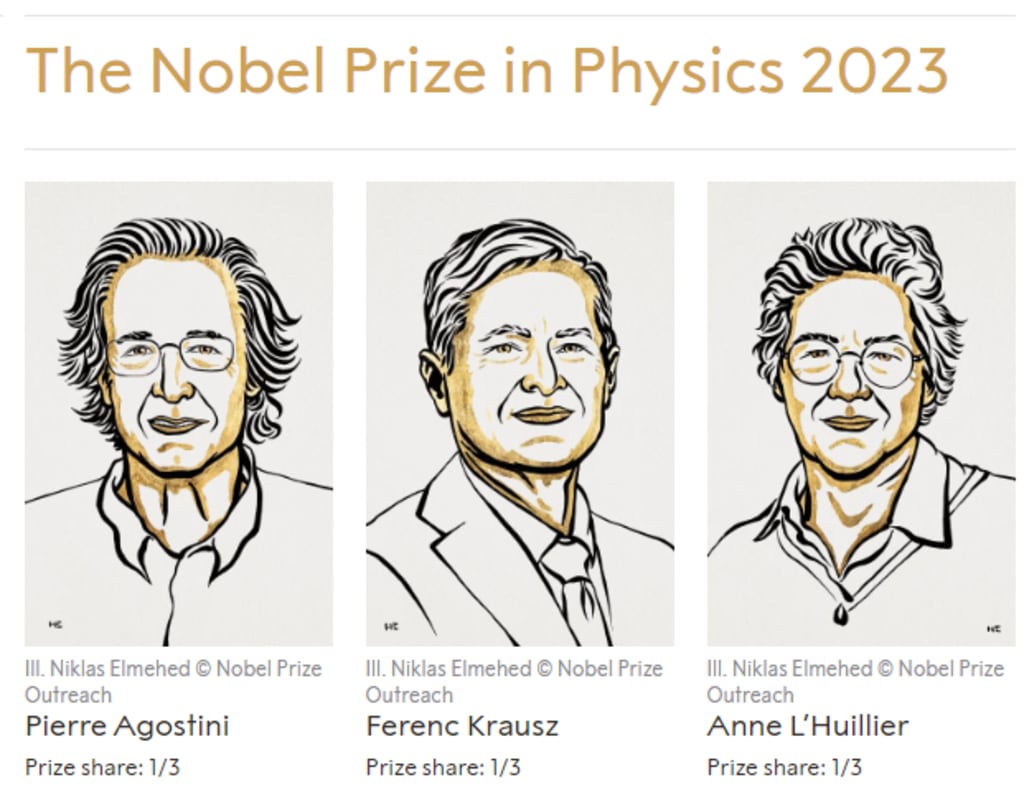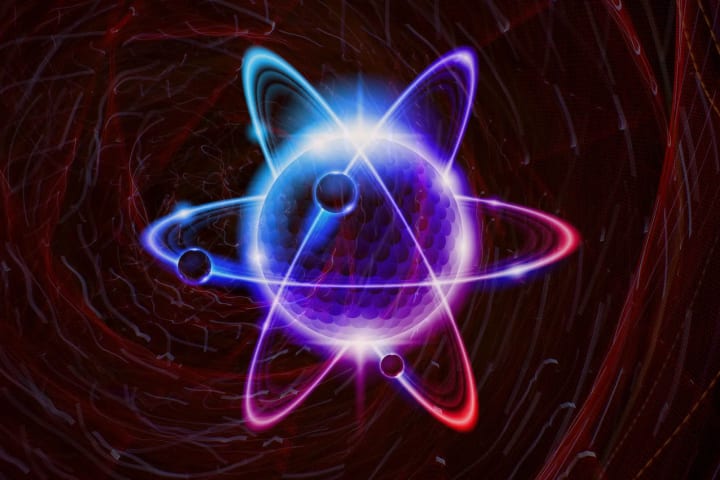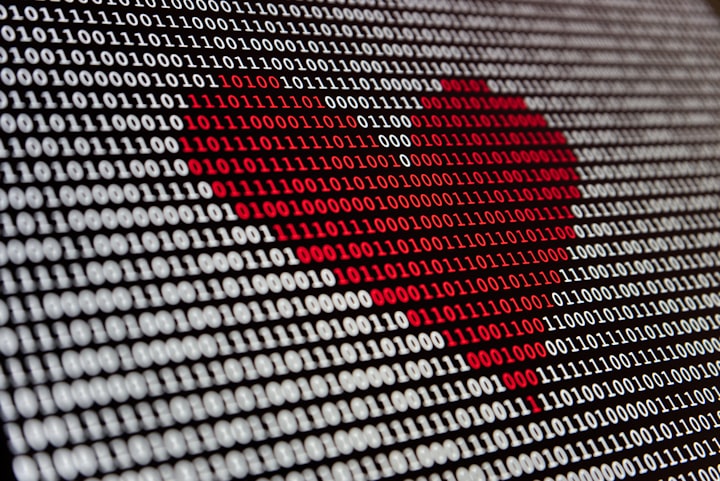The 2023 Nobel prize in physics
The Trio who sliced up time with light

Pierre Agostini, Ferenc Krausz and Anne L’Huillier are going to be in the future of science textbooks. They have won a Nobel prize for their experimental methods that generate attosecond pulses for the study of electron dynamics in matter. This was announced on October 3, 2023.
The discovery gave humanity new tools for exploring the world of electrons inside of atoms and molecules. An attosecond is very small we can't even feel it, The pulses are so incredibly short that they are measured in something called attoseconds – which is one billionth of one billionth of a second. 10 to the power (-18) seconds. An attosecond is so short that that the number of them in one second is the same as the number of seconds that have elapsed since the universe came into existence, 13.8 billion years ago. On a more relatable scale, we can imagine a flash of light being sent from one end of a room to the opposite wall – this takes ten billion attoseconds. but when entire atoms move the timescale is determined by their large and heavy nuclei, which are extremely slow compared to light and nimble electrons. When electrons move inside atoms or molecules, they do it so quickly that changes are blurred out in a femtosecond.
For the human senses, rapid movements blur together, and extremely short events are impossible to observe. We need to use technological tricks to capture or depict these very brief instances. When light is passed very fast we can capture electron movement that is very fast.

Why do we see electrons as clouds? The above image is an electron cloud. Electrons move very fast making it feel like an elliptical orbital. The fast speed blurs the image we see making it an electron cloud.
When we bowl a cricket ball, throw a basketball or kick a football we know where it went at the end. The major question of the quantum is that we can never find where a fired electron went. The electron could have bonded with some other molecule and produced charges or it could have disappeared elsewhere The quantum world is a place of uncertainty. When an electron is moving within an atom when you see the electron it is already not where you located it to be, it would have moved elsewhere. This new invention of attosecond speed light vibration.
We all know that light consists of waves – vibrations in electrical and magnetic fields that move through a vacuum faster than anything else. Red light has a wavelength of about 700 nanometres, one hundredth the width of a hair, and it cycles at about four hundred and thirty thousand billion times per second. The wavelengths used in ordinary laser systems are never able to get below a femtosecond, so in the 1980s this was regarded as a hard limit for the shortest possible bursts of light. The magic of attosecond pulses is that it is possible to make shorter pulses by combining more and shorter wavelengths. To add new wavelengths to light, more than just a laser is necessary; the key to accessing the briefest instant ever studied is a phenomenon that arises when laser light passes through a gas. The light interacts with its atoms and causes overtones – waves that complete a number of entire cycles for each cycle in the original wave.
In the end of 80's around 1987, Anne L’Huillier and her colleagues at a French laboratory were able to produce and demonstrate overtones using an infrared laser beam that was transmitted through a noble gas. The infrared light caused more and stronger overtones than the laser with shorter wavelengths that had been used in previous experiments
What really happens?
when the laser light enters the gas and affects its atoms, it causes electromagnetic vibrations that distort the electric field holding the electrons around the atomic nucleus. The electrons can then escape from the atoms. However, the light’s electrical field vibrates continuously and, when it changes direction, a loose electron may rush back to its atom’s nucleus. During the electron’s excursion, it collects lots of extra energy from the laser light’s electrical field and, to reattach to the nucleus, it must release its excess energy as a pulse of light. These light pulses from the electrons are what create the overtones that appear in the above experiments.
Benefits of the discovery
Attosecond pulses make it possible to measure the time it takes for an electron to be tugged away from an atom, and to examine how the time this takes depends on how tightly the electron is bound to the atom’s nucleus. It is possible to reconstruct how the distribution of electrons oscillates from side to side or place to place in molecules and materials; previously their position could only be measured as an average.
attosecond pulses can be used to push molecules, which emit a measurable signal. The signal from the molecules has a special structure, a type of fingerprint that reveals what molecule it is, and the possible applications of this include medical diagnostics.
Quantum computers are used to detect endless possibilities. The attosecond light vibration can be a breakthrough for the future of quantum and microscopic objects.
Give your comments on these discoveries. Will this discovery lead to future discoveries? Can this change the way people think about light and its physics? The other photon's properties are yet to be discovered fully. Thank you
About the Creator
Karun
🌿✨ Karun, a poet weaving emotions into verses, embarked on the journey of words to unearth the beauty of feelings. In the delicate dance of ink and emotion, my poetry delves into the nexus of the human heart and the natural world.✍️
Enjoyed the story? Support the Creator.
Subscribe for free to receive all their stories in your feed. You could also pledge your support or give them a one-off tip, letting them know you appreciate their work.






Comments (2)
That's interesting, thank for the article. I studied a lot of science in uni, and read Richard Feynman's quantum physic textbooks (without really understanding any of the math formulas). From this finding, have they determined if the electron is a probablity cloud, or is it really just moving too fast to determine where it is ?
Nice article 📝👍